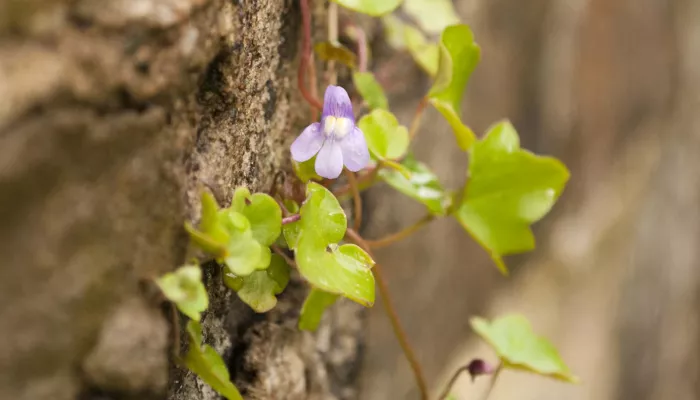About
Ivy-leaved toadflax is not a native species to the UK, but is now considered naturalised, having been here for several hundred years. It is a small, perennial herb that is often found growing in cracks in old walls and pavements, in rocky places and even on single beaches; it can form large, low-growing patches.Its tiny, mauve flowers resemble those of a snapdragon.

